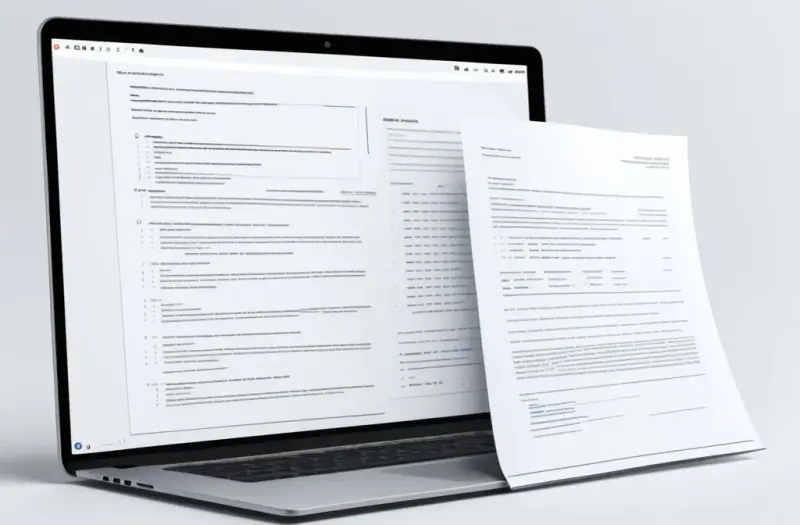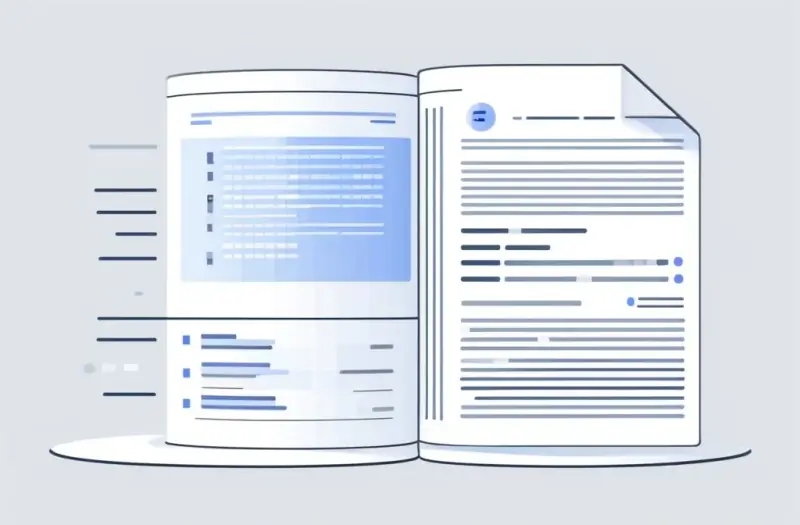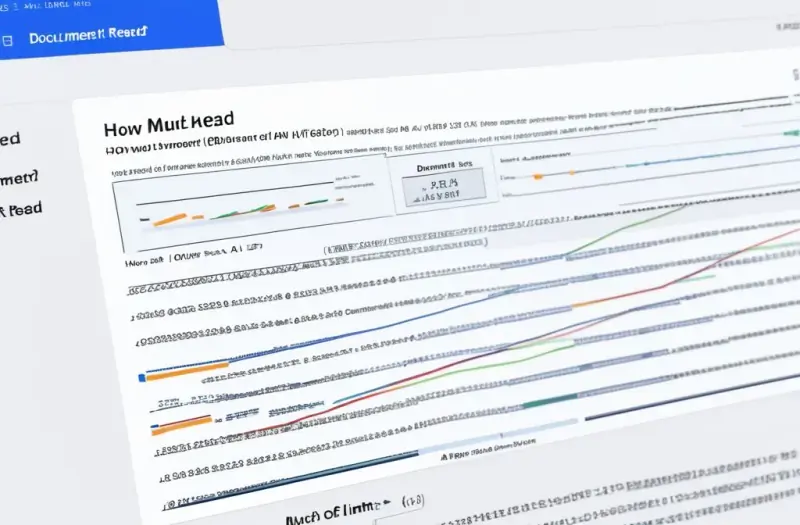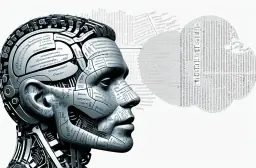How Much of a Document Does AI Read?

Table of Contents
Artificial Intelligence (AI) has transformed the way we interact with documents, analyzing vast amounts of data in record time. But just how much of a document does AI actually read? In exploring this, we aim to demystify AI’s reading scope, understanding its limits, and how its document-processing capabilities stack up against human comprehension. Let’s dive into the nuances of AI’s ability to analyze, understand, and process text data, and what implications it holds for us as users and developers.
Understanding AI’s Document Reading Scope
AI’s document reading scope is typically determined by the algorithms and machine learning models it uses to process information. Unlike humans, who read word-by-word and sentence-by-sentence, AI processes text in a more segmented way.
How AI Scans Content
- Tokenization: Most AIs divide content into smaller units or “tokens.” These tokens could be words, phrases, or even punctuation marks, depending on the complexity of the AI model.
- Sampling and Prioritization: Some AI models focus on the beginning of a document, assuming that the most important information is presented early. Others prioritize based on keywords or highlighted sections.
- Memory Constraints: Some advanced AI models have memory capacities that limit the number of tokens they can process at one time, often influencing how much of a document they can effectively “read.”
Despite the impressive speed and depth of analysis AI provides, its comprehension extent is inherently shaped by these operational limitations. Thus, understanding an AI’s content analysis range is essential to grasping how much of the document is truly processed.
AI Text Analysis Depth: Is AI Really “Reading”?

When we say AI is “reading,” we’re referring to pattern recognition and data processing rather than human-like reading. Unlike humans who may interpret context, tone, or hidden meanings, AI is designed to focus on specific text processing capacity. Here are some limitations:
- Semantic Understanding: AI often struggles with nuanced language. Slang, idioms, or cultural references might be lost on AI.
- Summarization and Content Gaps: Many AIs are designed to provide summaries, but these may omit context or details that humans would notice.
- Length of Document: Depending on its memory capacity, an AI may only process a certain percentage of a long document, affecting its document understanding span.
For instance, the average AI content read coverage may only extend to a few thousand tokens, meaning a lengthy document might be truncated, or only key sections analyzed.
AI Document Processing Limit and Its Implications
One of the pressing questions with AI document processing is its ability to handle large files without compromising on accuracy. When we rely on AI to parse contracts, medical records, or research papers, we need it to be comprehensive. However, here’s where limitations become apparent:
- Memory Constraints: Certain models, such as OpenAI’s GPT-3, are capped at a token limit of approximately 4,096 tokens, roughly equivalent to 1,500 words.
- Truncation Risks: A large document may exceed this limit, meaning the AI either skips or trims content.
- Prioritization Protocols: AI tools might prioritize certain sections over others based on programmed algorithms, potentially leaving out key details.
These constraints reflect the need to carefully select which AI model to use, depending on the required document read level by AI and the depth of information needed.
How AI Decides What Content to Scan and Process

Most AIs are trained to be selective in their reading to maximize relevance and efficiency. Here are some of the methods used to improve AI content analysis range:
- Keyword Matching: Some AIs scan for particular terms to prioritize certain sections over others.
- Structured Data: A document with headings, bullet points, and sections allows for better AI data ingestion capacity as it can identify relevant areas more easily.
- Hierarchical Processing: Some AI models process information hierarchically, first looking at the larger sections before delving into finer details.
Such strategies enable AI to enhance its machine reading extent but do not entirely replace the depth of human reading and comprehension.
Document Analysis Depth by AI: Comparing to Human Comprehension
Humans and AI approach reading in fundamentally different ways. While humans interpret meaning based on context, AI often struggles to move beyond literal interpretation. Let’s consider some differences:
- Contextual Nuance: AI might overlook subtleties like sarcasm, humor, or cultural context.
- Memory and Retention: AI’s “memory” is limited to the parameters it was trained on and is often reset between tasks.
- Detail Orientation: Humans can identify important details on the fly, while AI may not recognize significance unless specifically programmed to do so.
These contrasts illustrate why, despite its remarkable advancements, AI’s text consumption level remains below the nuanced, adaptive reading abilities that humans possess.
FAQ: Common Questions About AI’s Document Reading Capabilities
Can AI read an entire document from start to finish?
Most AIs do not read from start to finish but instead analyze based on token limitations and prioritization.
How does AI choose which parts of a document to read?
AI often relies on token limits, keywords, and hierarchical processing methods to decide which sections to prioritize.
Does AI understand complex human language?
AI has limitations with complex, idiomatic, or nuanced language and may struggle with sarcasm or humor.
What are AI’s token limits in document processing?
Popular AI models, like GPT-3, are typically capped at around 4,096 tokens, limiting the amount of content they can analyze at one time.
Can AI detect context and tone in a document?
AI can approximate tone to an extent but often misses deeper contextual nuances that humans easily recognize.
Key Takeaways
- AI document reading scope is limited by memory and processing constraints, usually analyzing text in sections based on token capacity.
- AI text analysis depth is often shallower than human reading, missing nuanced details and complex language.
- AI document processing limit means that longer documents may be truncated, with only prioritized sections being analyzed.
- AI comprehension extent focuses on pattern recognition and keyword matching, falling short of human-like understanding.
- Choosing the right AI model is crucial for tasks that require a deeper reading capacity and extensive comprehension.
Conclusion
In understanding how much of a document AI reads, it’s essential to recognize both its powerful capabilities and inherent limitations. While AI has proven incredibly useful in scanning, summarizing, and prioritizing document content, it is not a replacement for human reading and understanding. AI excels at processing large amounts of data quickly, but it lacks the nuanced comprehension that humans bring to text analysis. As AI technology advances, the reading scope, data ingestion capacity, and processing depth will likely improve, but knowing its limits remains crucial for informed usage in document analysis.
Popular Tags
ADS SPACE HERE
